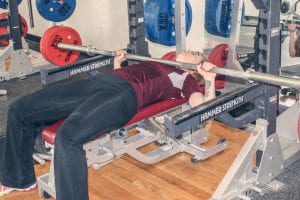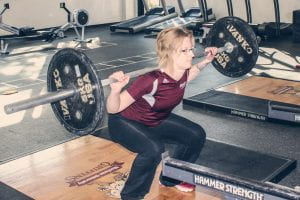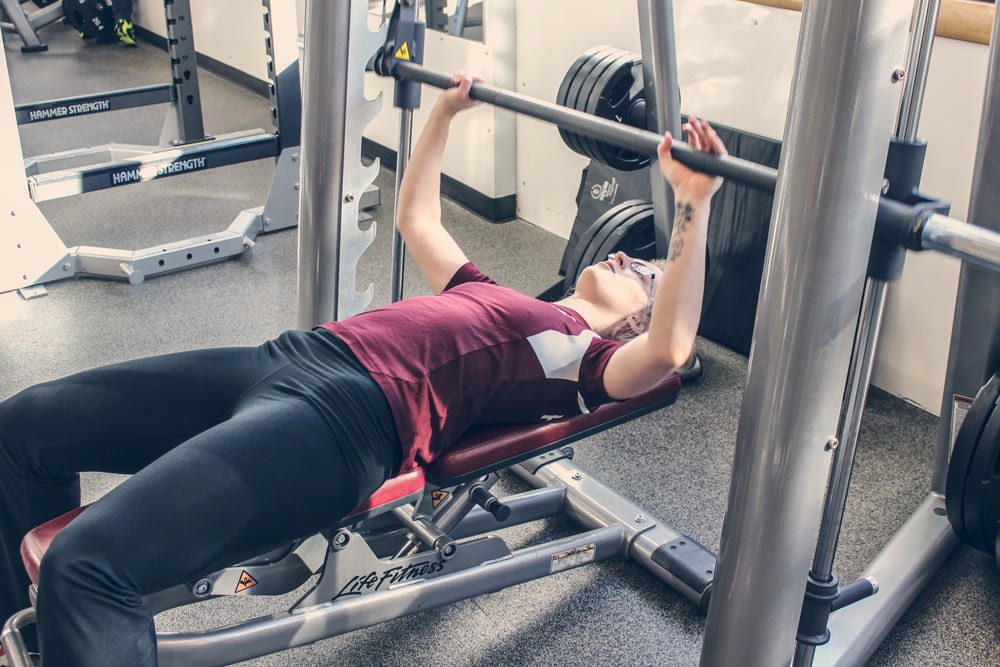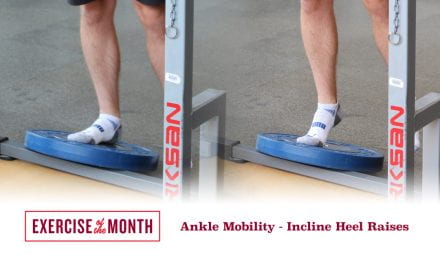The comparison between free weight training and weight machine training has been a topic of discussion in the fitness industry for some time, and this article will provide a brief summary of the pros and cons of using both free weights and weight machines.
Free weights use more muscles
Free weights involve the use of a dumbbell, barbell, or other weighted object that is used in various training techniques. It is termed “free” weights because the weight is not fixed, meaning that the person holding it has to stabilize it themselves. Stabilization is necessary because free weights require a person to control the weight in 3-dimensional space1. Examples of free weight exercises include dumbbell chest press, bent over row, and barbell back squat. They require the recruitment of multiple muscle groups in order to lift the weight, keep the weight stable, and for the person to maintain their balance during the exercise1,2. As well, they provide more functional training for daily activities2, as most activities we perform use multiple muscle groups (standing up from a chair uses most of the muscles in the legs). However, free weights have the potential to be dangerous if performed incorrectly, so proper training is necessary.
“free” weights because the weight is not fixed, meaning that the person holding it has to stabilize it themselves. Stabilization is necessary because free weights require a person to control the weight in 3-dimensional space1. Examples of free weight exercises include dumbbell chest press, bent over row, and barbell back squat. They require the recruitment of multiple muscle groups in order to lift the weight, keep the weight stable, and for the person to maintain their balance during the exercise1,2. As well, they provide more functional training for daily activities2, as most activities we perform use multiple muscle groups (standing up from a chair uses most of the muscles in the legs). However, free weights have the potential to be dangerous if performed incorrectly, so proper training is necessary.
Weight machines are safer to use
Machines are ideal for those new to weightlifting, those with certain injuries, or some people from the elderly population2. They are designed to simplify an action, and effectively isolate different muscle groups because stabilization muscles are removed from the exercise2. For example, on a bench press machine (such as a Smith Machine), the bar follows the same track on the ascent and descent. But when a person performs bench press with free weight – more force is required to support the weight horizontally as well as vertically, to keep the weight balanced. This can lead to fatigue of stabilizing muscles2. As a result, machines can allow a person to target prime movers (muscle(s) responsible for the majority of the work being performed) more effectively – in this  case, the pectoralis major or “pecs.” However, this isolation makes the benefits of machine lifting less applicable to everyday life. For example, certain exercises (such as leg press) cannot be applied to everyday life – when do you sit down in a chair and push 200 lbs horizontally with your legs?
case, the pectoralis major or “pecs.” However, this isolation makes the benefits of machine lifting less applicable to everyday life. For example, certain exercises (such as leg press) cannot be applied to everyday life – when do you sit down in a chair and push 200 lbs horizontally with your legs?
Are free weights or machines more effective?
Generally, free weights provide much higher strength and health benefits. Research has shown that there is a significantly higher amount of muscle activity during free weight lifts, when compared to doing the same exercise on a machine1,3. Specifically, one study compared muscle recruitment and activity during a Smith Machine back squat and a free weight back squat. It was found that there was significantly more activation in the calf (gastrocnemius), hamstrings (biceps femoris) and major parts of the quadriceps (vastus lateralis and vastus medius) when performing a free weight back squat as opposed to using a Smith Machine2.
On the other hand, machines are a good way to introduce a person to the muscle movements necessary for free weights – as they aid with producing the proper form throughout the exercise without the danger of injury as a result of improper technique2. They should certainly not be dismissed entirely. Machines are well-suited for school environments with minimal supervision, as no spotters are needed. Machines can also be useful for using isolations in injury rehabilitation – for example, when a person needs to strengthen particular muscles in their legs in order to recover from a knee injury2.
Which should you use to train?
This depends on your goals, fitness level, injury status, and experience. If you’re new to weightlifting, machines are a great option. They can provide noticeable strength gains, but at a more isolated level. If you’re interested in building greater, well-rounded, practical strength, free weights are the best option. This is also the case if you have a specific goal in mind, or if you want to improve sport performance2. It’s important to remember that you don’t have to choose one or the other necessarily; you can have an effective program that utilizes free weights as well as machines. If you’re unsure about a free weight exercise, or you have questions about technique, feel free to ask one of the experienced and knowledgeable staff at MacEwan University Sport and Wellness.
References
1. McCaw, S., & Friday, J. (1994). A comparison of muscle activity between a free weight and machine bench press. Journal of Strength and Conditioning Research. 8(4): 259-264.
2. Poliquin Group. (2012). Machines vs Free weights? A look at the controversy behind this important question. Found at: http://www.poliquingroup.com/ArticlesMultimedia/Articles/Article/876/Machines_vs_Free_Weights.aspx.
3. Spennywyn, K.C., (2008). Strength outcomes in fixed versus free-form resistance equipment. Journal of Strength and Conditioning Research. 22(1):75-81. doi: 10.1519/JSC.0b013e31815ef5e7.



